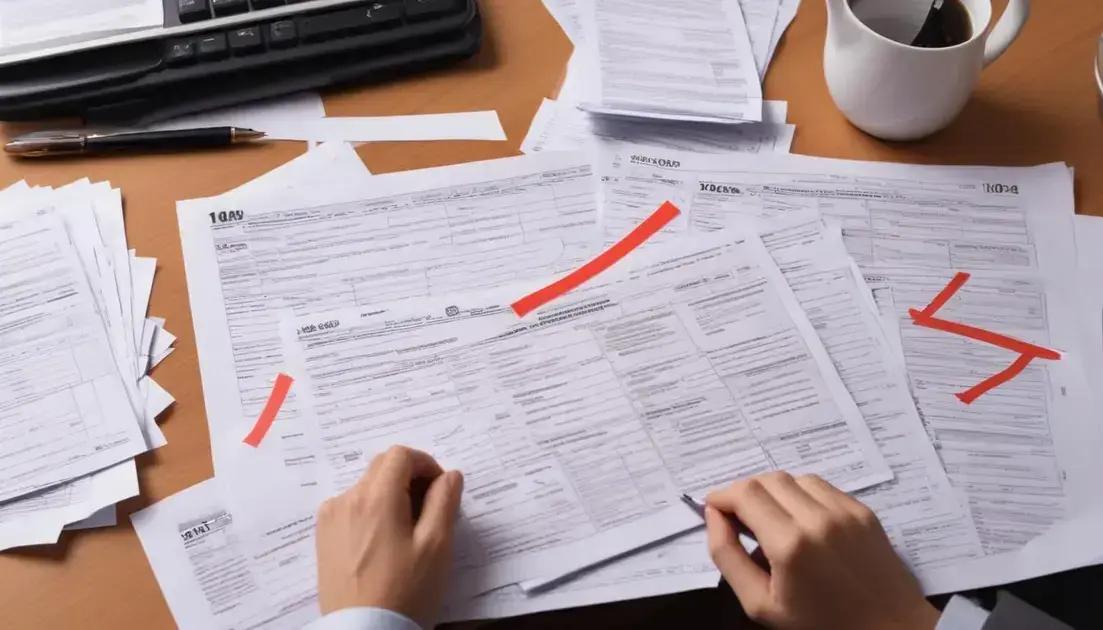Earned income tax credit: how it can put money back in your pocket

Did you know the earned income tax credit could be the key to a bigger tax refund? This benefit helps low-to-moderate-income workers keep more of what they earn. Let’s break down how it works and how you might qualify.
What is the earned income tax credit?
The Earned Income Tax Credit (EITC) is a refundable tax credit designed to help low-to-moderate-income workers and families keep more of their hard-earned money. Unlike deductions, which reduce taxable income, a tax credit directly lowers the amount of tax you owe—and if the credit exceeds your tax liability, you may receive the difference as a refund.
How the EITC Works
The amount of credit you qualify for depends on your income, filing status, and number of qualifying children. For example, in 2023, a single filer with three children could receive up to $7,430 if their income falls within the eligible range. The credit phases out as income increases, ensuring it targets those who need it most.
Who Benefits from the EITC?
Working families, single parents, and even individuals without children may qualify. The EITC not only reduces poverty but also encourages workforce participation by making low-wage jobs more financially rewarding.
Many eligible taxpayers overlook this credit, leaving thousands of dollars unclaimed each year. If you work but earn a modest income, the EITC could be a significant financial boost—especially during tax season.
Who qualifies for the earned income tax credit?
To qualify for the Earned Income Tax Credit (EITC), you must meet certain requirements related to income, work status, and family size. The IRS sets specific limits each year, so it’s important to check the latest guidelines before filing.
Income Limits for EITC
Your adjusted gross income (AGI) must fall below the threshold for your filing status and number of qualifying children. For example, in 2023, single filers with no children needed an AGI under $17,640, while married couples filing jointly with three children could earn up to $63,398 and still qualify.
Work and Residency Requirements
You must have earned income from wages, self-employment, or other taxable sources. Investment income (like dividends or rental income) must be below $11,000. You also need a valid Social Security number and must be a U.S. citizen or resident alien for the entire tax year.
Special rules apply for military personnel, clergy, and those receiving disability benefits. Even if you didn’t owe taxes, you might still qualify for EITC—making it a valuable boost for low-income workers.
How much can you get with the earned income tax credit?
The amount you can receive from the Earned Income Tax Credit (EITC) varies significantly based on your income, filing status, and number of qualifying children. For tax year 2023, the maximum credit amounts ranged from $600 for those with no children to $7,430 for families with three or more children.
EITC Payment Breakdown
Here’s how the credit amounts break down for 2023:
No qualifying children: Up to $600
1 child: Up to $3,995
2 children: Up to $6,604
3+ children: Up to $7,430
How the Credit Phases Out
The EITC gradually decreases as your income rises above certain thresholds. For example, a single parent with two children would see their credit begin to phase out at $21,560 and completely phase out by $53,057 in 2023. The phase-out ranges are higher for married couples filing jointly.
Remember that the EITC is refundable, meaning you could receive money back even if you don’t owe any taxes. This makes it one of the most valuable tax benefits for working families with modest incomes.
How to claim the earned income tax credit
Claiming the Earned Income Tax Credit (EITC) requires filing a tax return, even if you don’t owe any taxes or aren’t normally required to file. Here’s how to properly claim this valuable credit:
Step-by-Step Claiming Process
1. File Form 1040 or 1040-SR (not 1040-EZ)
2. Complete Schedule EIC if you have qualifying children
3. Provide Social Security numbers for yourself, spouse, and children
4. Report all earned income including wages and self-employment
Required Documentation
You’ll need:
📄 W-2 forms from all employers
🧾 1099 forms for self-employment income
👶 Child’s birth certificates if claiming dependents
🏫 School records proving residency if required
Many taxpayers qualify for free filing assistance through IRS Volunteer Income Tax Assistance (VITA) programs. These services can help ensure you claim the maximum credit you’re entitled to receive.
Common mistakes to avoid when claiming the credit

Many taxpayers miss out on the Earned Income Tax Credit or face delays because of common filing mistakes. Being aware of these errors can help you claim your credit smoothly and avoid IRS processing delays.
Top EITC Claiming Mistakes
1. Incorrect filing status: Married couples filing separately usually can’t claim EITC
2. Wrong SSNs: All Social Security numbers must be valid and match IRS records
3. Overlooking self-employment: Many forget to report side gig income that counts as earned income
4. Misunderstanding qualifying children rules: The child must meet relationship, age, and residency tests
Documentation Errors
📄 Missing income documents: Forgetting W-2s or 1099s leads to underreporting
👶 Incorrect dependents: Claiming children who don’t meet all requirements
🧮 Math errors: Simple calculation mistakes can reduce your credit amount
The IRS may delay refunds for EITC claims until mid-February to verify eligibility. Double-checking your return can prevent even longer delays from audit reviews or required documentation requests.
How the earned income tax credit impacts your tax refund
The Earned Income Tax Credit (EITC) can significantly boost your tax refund or even create one if you wouldn’t normally get money back. As a refundable credit, it reduces your tax bill dollar-for-dollar and pays out any remaining amount.
Direct Refund Impact
For many working families, the EITC represents the largest single payment they receive all year. A family with three children earning $30,000 could see their refund jump from $500 to nearly $8,000 with the EITC. Even taxpayers who owe nothing can receive the full credit amount as a refund.
Refund Timing Considerations
⏳ Early filers won’t get refunds faster
💸 Direct deposit typically arrives by late February
📬 Paper filers may wait until March or April
The EITC’s refundable nature makes it particularly valuable for low-income workers, often serving as a crucial financial boost during tax season. Many use these funds to pay debts, make essential purchases, or create emergency savings.
State-specific earned income tax credit programs
While the federal Earned Income Tax Credit (EITC) provides nationwide benefits, many states offer their own supplemental credits that can significantly increase your total tax savings. These state programs typically mirror federal eligibility rules but provide additional financial support.
States With EITC Programs
Currently, 31 states plus DC offer state-level EITCs, with credit amounts ranging from 3% to over 100% of the federal credit. Some standout programs include:
👨👩👧👦 California: Up to $3,417 for families with 3+ children (85% of federal credit)
🗽 New York: 30% of federal credit, with NYC offering an additional 5%
🦀 Maryland: One of the most generous at 100% of federal credit for some filers
Unique State Variations
Several states have special provisions:
🔄 Refundable vs. Non-refundable: Some states only reduce tax liability while others provide refunds
👥 Worker Eligibility: A few states extend credits to workers without qualifying children
🧒 Minimum Age: Certain states allow younger workers (18+) to qualify
To maximize your benefits, check your state’s revenue department website for specific eligibility rules and credit percentages that apply to your situation.
Tips to maximize your earned income tax credit
Getting the maximum Earned Income Tax Credit (EITC) requires careful planning and attention to detail. These practical tips can help you claim every dollar you’re entitled to receive.
Strategic Income Planning
Track all earned income: Report wages, tips, and self-employment income
Adjust work hours: Stay below income limits that reduce your credit
Consider marital status: Married filing jointly often provides higher phase-out thresholds
Documentation Strategies
– Keep pay stubs to verify all income sources
– Maintain school records for qualifying children
– Save residency proof (utility bills, lease agreements)
– Track childcare expenses that may qualify for additional credits
Filing Recommendations
Use IRS Free File if income below $73,000
Consult VITA volunteers for free expert help
File electronically to reduce errors and speed processing
Double-check all calculations before submitting
Remember you can amend returns for up to 3 years if you discover you qualified but didn’t claim the EITC.
Frequently asked questions about the earned income tax credit
Many taxpayers have questions about the Earned Income Tax Credit (EITC). Here are answers to some of the most common inquiries to help you better understand this valuable tax benefit.
Eligibility Questions
Can I claim EITC if I’m unemployed?
No – you must have earned income from employment or self-employment. Unemployment benefits don’t qualify.
Do college students qualify?
Possibly, if they meet income requirements and aren’t claimed as dependents.
Family Situation Questions
What counts as a qualifying child?
The child must be your son/daughter, sibling, or descendant; under 19 (or 24 if student); and live with you more than half the year.
Can divorced parents both claim EITC?
No – only the custodial parent who the child lived with longer can claim.
Technical Questions
Why was my EITC refund delayed?
By law, IRS must hold EITC refunds until mid-February to verify claims.
Can I claim EITC from previous years?
Yes – you can amend returns up to 3 years back if you qualified but didn’t claim.
Maximizing Your Earned Income Tax Credit Benefits
The Earned Income Tax Credit offers significant financial support for working individuals and families. By understanding the eligibility requirements, proper claiming procedures, and common pitfalls, you can ensure you receive every dollar you deserve.
Remember that state-specific programs may provide additional benefits beyond the federal credit. With careful planning and documentation, the EITC can make a meaningful difference in your financial situation each tax season.
If you think you might qualify but haven’t claimed the credit in past years, consider amending your previous tax returns. This powerful tax benefit exists to reward work and help families keep more of what they earn.






